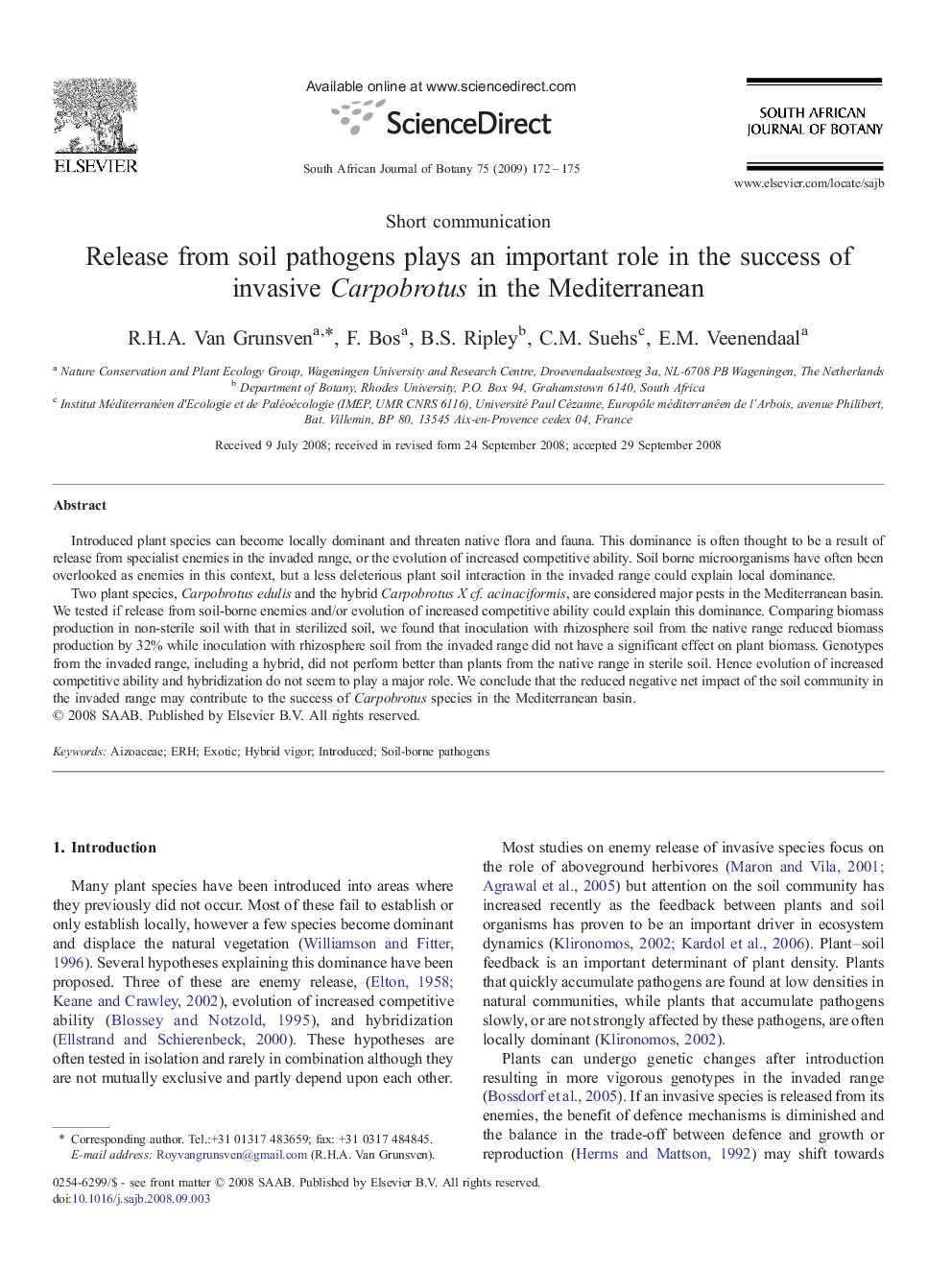| Article ID | Journal | Published Year | Pages | File Type |
|---|---|---|---|---|
| 4521157 | South African Journal of Botany | 2009 | 4 Pages |
Introduced plant species can become locally dominant and threaten native flora and fauna. This dominance is often thought to be a result of release from specialist enemies in the invaded range, or the evolution of increased competitive ability. Soil borne microorganisms have often been overlooked as enemies in this context, but a less deleterious plant soil interaction in the invaded range could explain local dominance.Two plant species, Carpobrotus edulis and the hybrid Carpobrotus X cf. acinaciformis, are considered major pests in the Mediterranean basin. We tested if release from soil-borne enemies and/or evolution of increased competitive ability could explain this dominance. Comparing biomass production in non-sterile soil with that in sterilized soil, we found that inoculation with rhizosphere soil from the native range reduced biomass production by 32% while inoculation with rhizosphere soil from the invaded range did not have a significant effect on plant biomass. Genotypes from the invaded range, including a hybrid, did not perform better than plants from the native range in sterile soil. Hence evolution of increased competitive ability and hybridization do not seem to play a major role. We conclude that the reduced negative net impact of the soil community in the invaded range may contribute to the success of Carpobrotus species in the Mediterranean basin.
